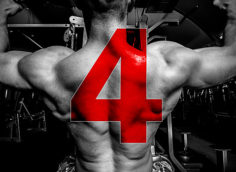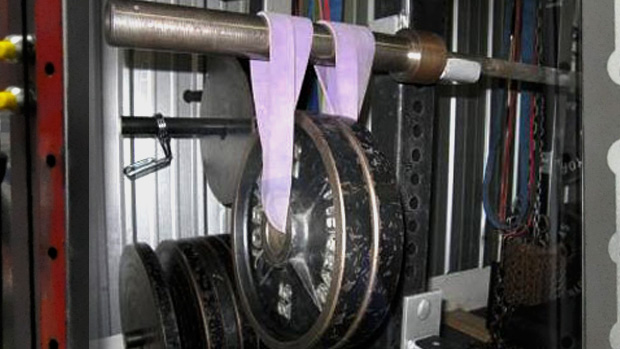What's a T-Spine?
Your thoracic spine sits between the cervical vertebrae in your neck and the lumbar vertebrae in your lower back. A healthy T-spine should be able to move forward, backward, and side to side, as well as rotate. This is not only important for everyday function, it's also vital for people who like to push their limits in the gym.
Having a mobile T-spine is essential to preventing shoulder injury and lower back injury down the road. When you have a rounded posture, your shoulders are pushed forward, and every time you do something overhead your acromion can pinch down on all the soft structures in your shoulder leading to impingement. Also, having a tight T-spine causes people to compensate by excessively arching their backs when overhead lifting.
The sequence in which you address your mobility is important. Start with soft tissue work followed by muscle activation in the back. Next, stretch the muscles you'll be working, then do specific exercises and drills to open up your T-spine.
To help restore functionality to your T-spine, begin with a little soft tissue work. This will allow the movements to feel more fluid and less restricted.
Release the Upper Traps

This will keep your upper traps from being overactive during your mobility drills. Use a lacrosse ball and a wall. Place the ball on top of the traps and look in the opposite direction of the wall. This will help depress the shoulder while stretching and releasing the traps.
Release the Pecs

Place a softball on the outer pec next to the front of your shoulder. Use deep pressure and small movements. The pressure should be deep so that you get the feeling your shoulder blade is being pushed back.
Release the Lats

Place a softball on the outside of the armpit. Use deep pressure and allow yourself to relax. Once you find an area of tenderness or a knot, slowly sweep your arm upward.
Release the Traps/Rhomboids
Use a lacrosse ball to release the traps and rhomboids and "dig out" the shoulder blade. Extend your arm back once you find a knot or area of sensitivity. A lot of times your shoulder blades get stuck and can't protract, retract, or upwardly rotate properly. Releasing the muscles inside the shoulder will ensure the success of your T-spine drills.
Once you've finished your soft tissue work, perform some muscle activation to make sure you're restoring posture and retraining the proper muscles. Here are three exercises that are good to perform before moving on to your stretches and drills:
- Horizontal Band Pull-Apart (Palms Over and Palms Under)
- Vertical Band Pull-Apart (Palms Over and Palms Under)
- Banded Face Pull
Once everything has been released and you've activated your shoulder stabilizers, hit a few banded stretches targeting the chest, lats, and triceps to assist in moving through a full range of motion in the drills.
Doing these drills will help you achieve mobility through your T-spine. You can perform these stretches as a warm-up, while you rest between sets, or after you finish your training.
PVC Pipe Overhead Reach on a Foam Roller (Over & Under Grip)
Cue: Engage your core by flattening your lower back down to the foam roller. Arching the lower back during this movement takes the focus away from the T-spine.
Low Lunge with Twist
Cue: Think "sniff your armpit." You should be externally rotating your shoulder. Retract your shoulder blade and think of corkscrewing your shoulder back in its socket.
Low Lunge with Twist into Overhead Reach
Cue: After corkscrewing your shoulder from the twist, rotate your pinky down towards the floor as you reach overhead. Your bicep should be just behind your ear and you should feel a big stretch through the lat.
Squat Hold with Reach Back
Cue: Drive your knees out, extend your shoulder back and look underneath your armpit.
Modification: If your heels lift, place plates underneath them.
Plank Scapular Protraction ("Plus Push-Ups")
Cues: Keep your elbows straight the entire time. Feel your shoulder blades "pull apart" as you protract your arms and attempt to round the top part of your back. Be sure your core stays engaged the entire time. This exercise is great for strengthening your serratus anterior.
Chest-Supported Scapular Retraction
Cues: Allow yourself to feel a stretch by passively allowing weight to pull your shoulders into protraction. Activate your upper back musculature by retracting your shoulder blades once a stretch is felt.
Pull-Up – Initial Lat Engagement
Cues: Attempt to slide your shoulder blades down towards your back pockets. This drill allows you to focus on depressing the scapula all the while stretching your lats and teaching them how to contract properly.





